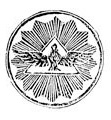Содержание
ABREVIATIONS ................................................................................ xv
Introduction ........................................................................................... 1
Chapter 1: Insecure Identities and the Nationalist Revival ......... 5
1.1. Nationalism: Why is There not “a” Theory of
Nationalism? ........................................................................... 7
1.2. Nationalist Revival, National Identity and Security. ....... 21
1.3. Plan of the Study ................................................................... 27
Chapter 2: Theories of Nation and National Identity:
Comparing Soviet (Russian, Ukrainian) and Western
Perspectives.................................................................................. 37
2.1. Major Elements Within the Genesis of Nation, Ethnie,
National and Ethnic Consciousness. ................................. 37
2.1.1 “Nation”: Modernist vs. Primordialist
Perspectives .................................................................. 38
2.1.2 Ethnic Community, Ethnie, Ethnos .......................... 42
2.1.3 National Consciousness as a Complex System of
Beliefs ............................................................................. 49
2.1.4 Ethnic Consciousness—Optional or Crucial? ......... 55
2.2. Ethnicity and Its Place Within National
Consciousness. ..................................................................... 60
2.2.1 Myths of National Consciousness or National
Consciousness as a Myth?........................................... 61
2.2.2 Stereotypes and National Consciousness ................ 71
Conclusions to Chapter 2 ............................................................ 76
Chapter 3: Nationalism and Societal Security............................... 79
3.1. Nationalism, War, and Security. ......................................... 79
3.2. Security Communities and Societal Security. ................... 92xii
3.3. The Security Community of EU-NATO and the Societal
Security of Ukraine .............................................................. 99
3.1.1 Presidential Election Campaigns in Ukraine
(1999-2019) as Reflection of Societal Security
Concerns ...................................................................... 105
3.1.2 Influence of the EU-NATO Security Community
Expansion on Russian-Ukrainian Relations ........... 108
Conclusions to Chapter 3 .......................................................... 121
Chapter 4: From Soviet Ethno-Political Engineering to Ethno-
Geopolitics: The Construction of a “Cossack” Nation in
Ukraine and “Russian Civilization” ..................................... 125
4.1. The Heritage of Soviet Ethnography and the Revival
of Ethno-Geopolitics in Russia ......................................... 126
4.2. Ethno-Geopolitics of Putin’s Eurasianism ....................... 136
4.2.1 What is Putin’s Eurasianism? .................................. 137
4.2.2 Putin’s Nationalism: Known Knowns ................... 139
4.2.3 Putin’s Nationalism: Known Unknowns ............... 140
4.2.4 Revival of Political Eurasianism Ideology in
Russia ........................................................................... 141
4.2.5 New Eurasianism: Implications and Contra-
dictions ........................................................................ 144
4.2.6 Unknown Unknowns of Putin’s Eurasianism ...... 146
4.3. The Cossack Revival in Russia .......................................... 148
4.4. The Heritage of Soviet Ethnography and Ethno-Geo-
political Discourse in Ukraine .......................................... 179
4.5. The Cossack Revival in Ukraine ....................................... 183
Conclusions to Chapter 4 .......................................................... 200
Chapter 5: Insecurity of Nationalism in Ukraine and Russia:
A Case Toward a Normative Theory of Nationalism ........ 209
5.1. Nationalism as a Modern Belief System .......................... 209
5.2. Nationalism, Federalism and Civil Society. .................... 215xiii
5.3. Summary .............................................................................. 224
BIBLIOGRAPHY .............................................................................. 233
Appendix 1: The Case Study of the Black Sea Cossack
Revival ........................................................................................ 253
1.1. Fieldwork Methods. ........................................................... 253
1.2. Phases of Fieldwork and of Fieldwork Methods
Application. ........................................................................ 256
1.3. Evolution of Personal Identities—Shift Towards
Cossack Identification. ...................................................... 263
1.4. Black Sea Cossacks—Self-Image and Perception of
Others .................................................................................. 273
Summary ..................................................................................... 281
2. Reflections of the Societal Security Concerns in the Conflict
Situation Between the Two Cossack Organizations in
the Black Sea Region. ......................................................... 287
2.1. Description of the Two Cossack Movements .................. 287
2.2. The Origin of Conflicting Interests ................................... 293
2.3. Self-Perception of Parties ................................................... 294
2.4. An Attempt to Solve the Problem..................................... 295
2.5. The Social Context .............................................................. 296
Summary ..................................................................................... 297
Appendix 2. Photo-Pictures ............................................................ 301
ENDNOTES ....................................................................................... 305

